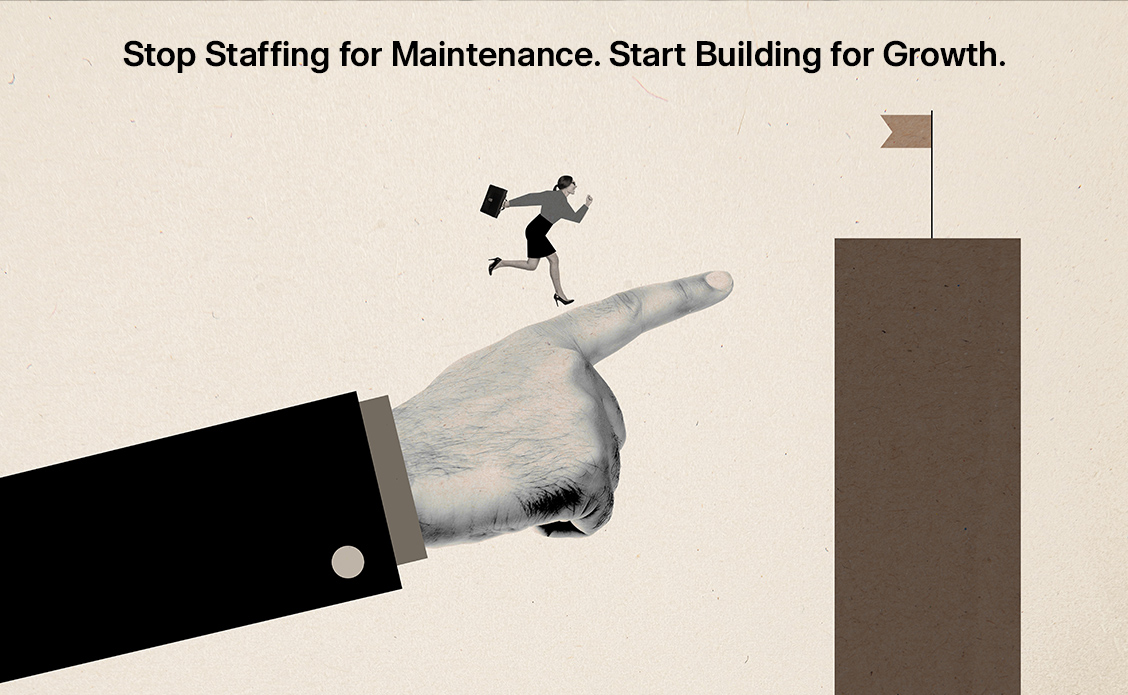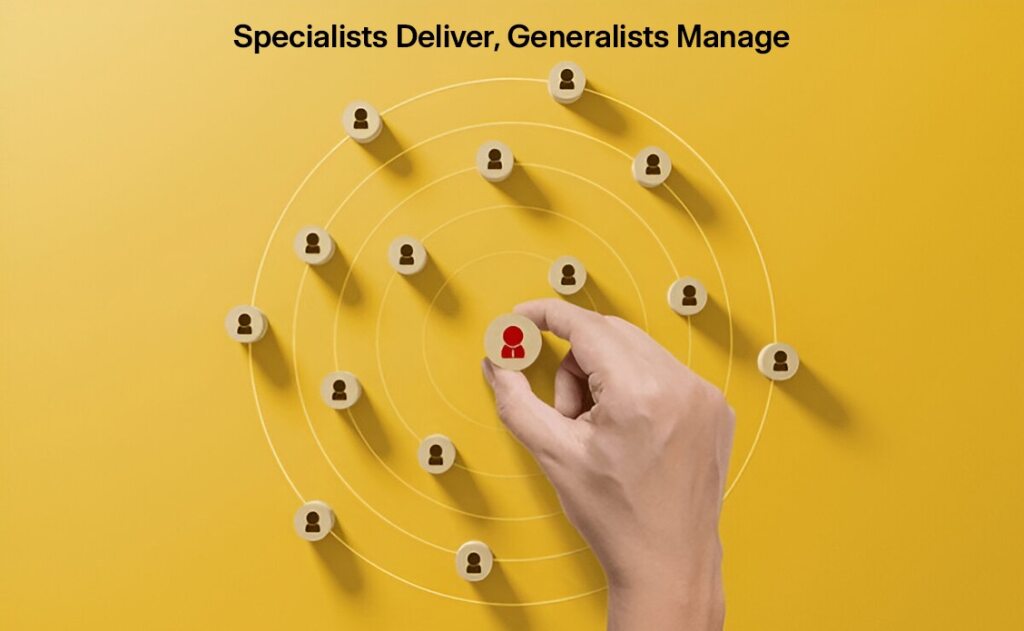Founders are often told to “build the team” before they scale. But here’s the unspoken truth:
Most early teams are overbuilt for maintenance—and underbuilt for growth.
At NextAccel, we see this imbalance show up across every client’s org chart. Dev teams bogged down in support tickets. Designers trapped in slide decks. Demand gen stuck reporting on campaigns instead of generating real pipeline.
The result? High burn, low velocity, and a constant feeling of “we’re busy, but not moving.”
If you’re a founder wondering why growth feels harder than it should, you may not have a resourcing problem—you may have a resourcing model problem.
This article breaks down how to staff Dev, Design, and Demand Gen for velocity—not upkeep—and how to structure these functions as growth engines, not internal service desks.
The Core Issue: Activity ≠ Progress
Startups scale fast. But so does internal demand.
As teams grow, requests pile up:
- Sales wants landing pages
- Product wants UI updates
- Ops wants dashboards
- Leadership wants decks
Dev, design, and marketing teams slowly shift from building for growth to maintaining systems around the org.
If your builders are always responding to internal requests, they’re not driving growth. They’re plugging leaks.
This is where most scaling companies get stuck—trapped in busywork disguised as output.
Step 1: Redefine Roles Around Business Value
The first fix is structural. Separate your builders from your maintainers.
In Dev:
Split between:
- Product Engineers: Ship new features, drive usage, enable monetization.
- Platform Engineers: Own infrastructure, reliability, speed.
Most startups only have one team doing both—leading to delays, context-switching, and maintenance overload.
In Design:
Split between:
- Growth Designers: Optimize conversion, marketing performance, customer UX.
- Brand/Content Designers: Own decks, docs, sales enablement.
If your designers spend 70% of time on internal slides and PDFs, you’re underleveraging design.
In Demand Gen:
Split between:
- Strategic Demand Gen: Run new campaigns, test new channels, own pipeline.
- Ops/Reporting: Measure performance, maintain martech stack.
Too often, one person is juggling strategy, copy, performance, reporting, and stakeholder updates. The result? Growth stagnates.
Step 2: Use On-Demand Resources for Maintenance
Maintenance isn’t optional. But your growth team shouldn’t own it.
Use embedded or fractional teams to offload:
Internal comms decks
- QA and test support
- Bug triage
- Presentation design
- MarTech admin
- Landing page production
This frees your core team to focus on outcomes that drive revenue—not requests that just keep the lights on.
“You scale faster when your best people do their best work—not all the work.”
Step 3: Tie Each Function to Revenue Outcomes
Every function should map directly to growth outcomes. Here’s how we advise our clients to frame it:
| Function | Growth Responsibility | Metrics That Matter |
|---|---|---|
| Dev | Build features that increase revenue or retention | Activation, usage, expansion MRR |
| Design | Optimize user journeys, drive conversion | CVR, time-to-value, NPS |
| Demand Gen | Fill pipeline with ICP-fit leads | SQLs, pipeline velocity, CAC payback |
If your design team doesn’t know what funnel they’re optimizing, or your engineers can’t see how usage ties to expansion—you’re flying blind.
Make these functions accountable to growth with the same clarity as sales.
Step 4: Rebuild Your Resourcing Model
Here’s how we help scaling companies right-size their growth org:
1. Audit Internal Demand
Track how much time dev/design/demand gen teams spend on internal requests vs. growth work. You’ll be shocked how much is reactive.
2. Segment Responsibilities
Define 2–3 “lanes” for each team: core growth, internal enablement, and maintenance. Assign ownership accordingly. Protect core growth time.
3. Layer in On-Demand Execution
Use freelance, fractional, or embedded support for production, QA, and enablement assets. Free your in-house team for experimentation, iteration, and scale.
4. Create a Request Triage System
Don’t let every stakeholder’s Slack message become a sprint item. Build intake workflows that prioritize by impact, not volume.
5. Align OKRs to Business Growth
Make every team’s quarterly goals traceable to ARR, pipeline, or usage—not just “requests completed” or “tickets resolved.”
Real Example: A SaaS Team That Cut Burn and Doubled Velocity
We worked with a $9M ARR SaaS company with a 12-person design + marketing team. Everyone was at capacity—but growth had stalled.
Problem?
- Designers were doing internal decks 50% of the time
- Demand gen was stuck running retros, not testing new campaigns
- All development sprints included bugs, support fixes, and internal tools
Solution:
- We re-scoped roles based on revenue outcomes
- Added on-demand resources for brand and content design
- Created a growth pod with dev, design, and demand gen focused solely on pipeline and monetization
Result:
- CAC payback improved by 36%
- Burn held flat for two quarters
- Revenue per employee increased 22%
- Internal teams reported greater focus and lower stress
Final Advice: Design for Growth, Not Just Delivery
“Founders don’t just need more talent. They need that talent pointed in the right direction.”
If you want to scale efficiently, your dev, design, and demand gen teams can’t be internal agencies. They must be builders of growth.
That means:
- Structuring roles by value creation
- Protecting core teams from maintenance
- Using on-demand execution for low-leverage work
- Aligning everything to outcomes, not activity
At NextAccel, we help founders rewire their orgs for high-impact growth—without burning out their best people or bloating their cost structure.
Want to pressure-test your current team design?
Contact us for a 90-minute Growth Org Audit.




